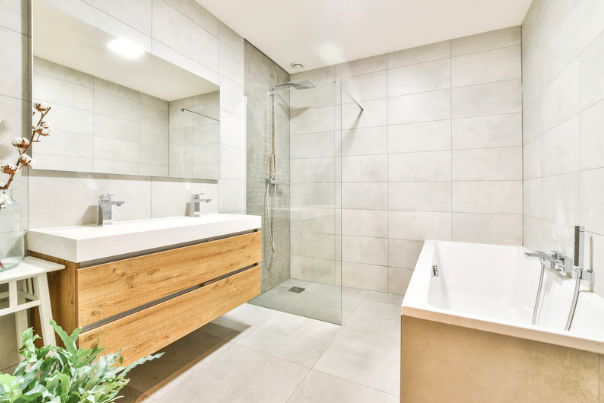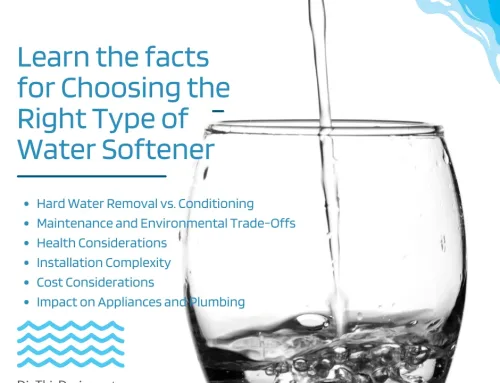Most homeowners don’t think much about their plumbing systems. However, they play a critical role in your daily life. In particular, your plumbing drains—whether from your sink, toilet, or tub—work hard to keep wastewater away from your home as possible.
Blocked drains are one of the most common plumbing issues plaguing homeowners. A slow-draining sink can be annoying and creates a disgusting mess. Fortunately, clogged drains are also one of the most manageable issues you can resolve.
On the other hand, if clogged drains become too much to handle, you may also seek help from professional plumbing experts. Reliable companies like Carter’s My Plumber or similar ones can help you unclog your drains and assess your plumbing system.
How to Unclog Any Drain in Your Plumbing System

Here are four methods to unclog any drains at home quickly.
Get a Plumber’s Snake
If you have stubborn or chronic clogs in your drain, you should consider buying a plumber’s snake from your local hardware store. This tool features a coiled spiral snake allowing you to reach down your drain. When it hits an obstruction, cranking the handle can loosen and dislodge the debris so you can pull it out.
You might wonder: How long does it take to snake a drain? The answer will depend on the clogs in your drain. For softer clogs, you can clear them in just a few minutes. However, you may have to wrestle with your pipes for hours for deeper and more stubborn clogs.
Pour Boiling Water
One of the easiest ways to unclog slow-draining sinks is to pour boiling water simply. Generally, most sinks get clogged due to grease, soap residue, oil, and other small solid waste stuck in the drains. Boiling water can help melt and loosen these types of blockages in your pipes, especially if you’re guilty of throwing away grease and oil down your kitchen sink.
For this method, bring enough water to a boil. Once boiling, slowly pour it down the sink drain and let it sit for a few minutes. Turn on the faucet and check if the water drains more quickly than before. Otherwise, you can repeat the process until the clog starts to loosen.
If it’s still slow draining after three tries, your drain may have other solid clogs that require other removal methods. Meanwhile, remember that you shouldn’t pour boiling water if your drain has PVC pipe since it could melt or damage the plastic.
Use a Plunger
If boiling water doesn’t do the trick, a plunger can forcefully loosen blockages in your drains. You can also use this method in combination with the previous approach to deeply clean your drains, especially sinks.
Here’s how to use a plunger:
- Fill the tub or sink with boiling water until the rubber part of the plunger is submerged.
- Next, place the plunger over the drain opening.
- Start pumping it up and down, creating a sucking pressure to dislodge debris in your drains.
- Remove the plunger and check if the water drains more smoothly.
- Repeat the process as necessary.
Plumbing experts suggest using a flat-bottomed plunger for tubs and sinks. Most individuals use toilet plungers only to maintain hygiene.
Make a Homemade Drain Cleaner
While no one’s stopping you from buying a chemical drain cleaner from the grocery store, experts recommend skipping these harsh cleaners. Instead, consider using natural alternatives. You can create homemade natural drain cleaners using organic components.
Meanwhile, chemical cleaners only provide instant, temporary fixes while doing long-term damage to your pipes. Some chemicals can negatively affect metal pipes, causing rusting and reducing lifespan. Plus, they pollute water bodies.
Most homemade natural drain cleaners are gentler on your pipes while removing stubborn clogs. Two of the most common ingredients to clean drains are baking soda and vinegar. They have natural sanitizing and deodorizing effects, leaving your drains and pipes clean.
Here’s how to use them:
- Pour a cup of baking soda into the drain first.
- Then, pour white vinegar to create a bubbling effect that breaks down clogs and cleans your drains.
- Leave it for 10 to 15 minutes.
- Then, pour hot water to break more clogs, especially grease.
You should see better draining. Otherwise, you can repeat the process to loosen more stubborn clogs.
Takeaway
Drain clogs can go from annoying to downright dangerous, especially if water from the toilet starts to back up. Fortunately, with this information, it shouldn’t be that difficult to unclog your drains. If you notice slow-draining sinks or experience standing water due to clogs, consider any or a combination of the above methods. They can quickly loosen and remove any build-up debris and residue in your drain.
Other Posts You Might Enjoy:
5 Plumbing Maintenance Mistakes To Avoid
How Can I Clear My Clogged Drain Without Chemicals





